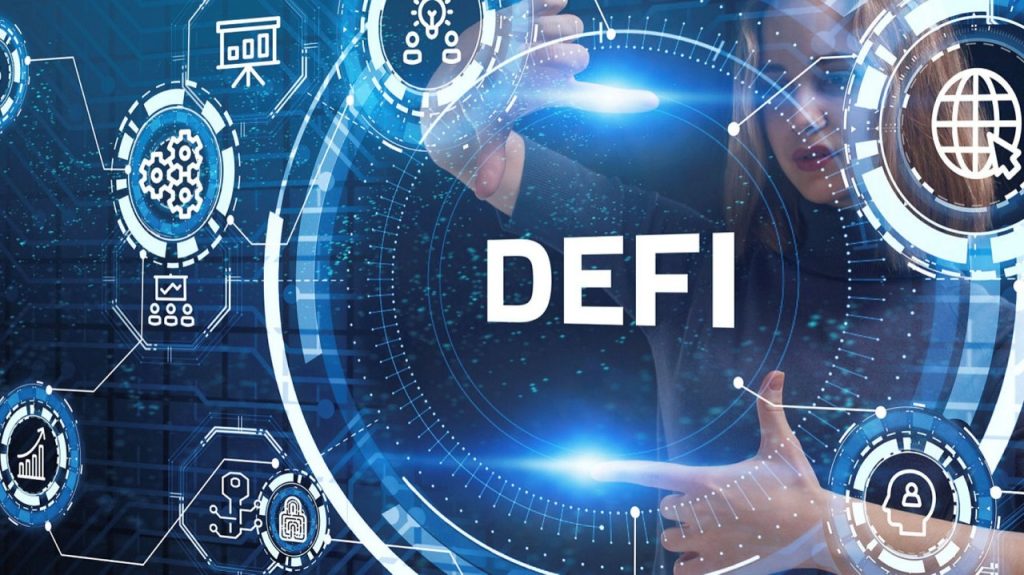Decentralized Finance, or DeFi, is one of the most prominent innovations born from blockchain technology. By removing intermediaries and enabling open access to financial services, DeFi challenges the very foundations of traditional finance. As blockchain infrastructure continues to mature—with improved scalability, security, and interoperability—DeFi is poised to become more than just an experimental frontier: it could fundamentally reshape global finance.
This article explores how DeFi is changing the rules of financial engagement, the impact it could have on traditional banking and finance, and what the future might look like as adoption accelerates.
1. What Is DeFi?
DeFi refers to a collection of blockchain-based applications and protocols that replicate and extend traditional financial services—such as lending, borrowing, trading, insurance, and asset management—without relying on centralized institutions like banks or brokers.
Key features of DeFi include:
- Open access: Anyone with an internet connection and a digital wallet can participate.
- Transparency: All transactions and rules are visible and verifiable on public blockchains.
- Interoperability: Many DeFi protocols are modular and can be integrated with others via smart contracts.
- Automation: Smart contracts automatically execute agreements and transactions without intermediaries.
2. How DeFi Challenges Traditional Finance
As DeFi grows, it exposes inefficiencies, gatekeeping, and systemic risks that have long been accepted in traditional finance. Here are some key areas where DeFi is having an impact:
- Disintermediation
DeFi removes banks, clearinghouses, and payment processors from the equation. Peer-to-peer transactions can occur directly, reducing costs and increasing speed. - Global financial inclusion
Millions of people who lack access to banking services can participate in DeFi using only a smartphone and internet connection. - 24/7 Markets
Unlike traditional financial markets that close on weekends or holidays, DeFi platforms operate continuously and globally. - Programmable money
Smart contracts allow for highly customizable financial instruments, from collateralized loans to interest-bearing tokens. - Ownership and Control
In DeFi, users typically retain control of their assets and data, rather than surrendering them to institutions.
3. Key Sectors of DeFi and Their Traditional Counterparts
| Traditional Sector | DeFi Equivalent |
|---|---|
| Banks and Lending | Aave, Compound (peer-to-peer lending/borrowing) |
| Stock Exchanges | Uniswap, SushiSwap (decentralized exchanges) |
| Asset Management | Yearn Finance, Enzyme (automated yield farming) |
| Insurance | Nexus Mutual, InsurAce (peer-to-peer insurance) |
| Stable Currencies | DAI, USDC (crypto-backed or fiat-backed stablecoins) |
Each of these DeFi solutions offers an alternative to traditional institutions—often with better accessibility, lower fees, and greater user autonomy.
4. The Maturing Infrastructure Behind DeFi
The future of DeFi depends on the growth and stability of the blockchain platforms it runs on. Several recent and emerging developments are enhancing DeFi’s long-term viability:
- Layer-2 Scaling Solutions: Projects like Optimism, Arbitrum, and zk-rollups drastically reduce transaction fees and improve speed.
- Cross-Chain Interoperability: Bridges and protocols such as Polkadot, Cosmos, and Chainlink facilitate communication across blockchains.
- Security Improvements: More rigorous audits, formal verification, and decentralized insurance are mitigating early vulnerabilities.
- Institutional-grade custody and compliance: New tools are helping integrate DeFi with regulated financial markets.
As these components evolve, DeFi will become more robust, user-friendly, and suitable for mainstream adoption.
5. Potential Transformations in the Financial System
The long-term impact of DeFi on the global financial landscape could be profound:
- Redefining the role of banks
Traditional banks may transition into service providers for DeFi protocols, offering fiat on-ramps, regulatory compliance, and integration layers. - Changing credit and lending models
DeFi offers collateralized, algorithmic, or reputation-based lending systems, which could replace or augment traditional credit scoring. - New monetary dynamics
Algorithmic stablecoins and decentralized liquidity pools introduce alternative models of monetary control and value exchange. - Increased financial autonomy
Individuals could control their own financial destinies without reliance on centralized banks or governments.

6. Risks and Challenges to Overcome
While the opportunities are vast, DeFi still faces several obstacles before it can truly redefine global finance:
- Security vulnerabilities: Smart contract bugs and exploits have resulted in high-profile hacks and losses.
- Regulatory uncertainty: Governments are still developing policies for decentralized platforms, and inconsistent regulation could stifle innovation.
- User experience: DeFi interfaces can be complex, intimidating, and inaccessible for non-technical users.
- Scalability and congestion: Popular DeFi networks have historically suffered from high fees and slow transaction times.
- Market volatility: Many DeFi assets are exposed to extreme price swings, increasing financial risk.
Addressing these issues will require collaboration between developers, regulators, and institutions.
7. The Future: Coexistence or Displacement?
It is unlikely that DeFi will entirely replace traditional finance in the near term. Instead, the two systems are increasingly likely to coexist and converge in new ways:
- Hybrid finance (TradFi + DeFi) models will emerge, where banks integrate blockchain-based services within regulatory frameworks.
- Centralized platforms may adopt decentralized protocols to improve transparency and reduce costs.
- Regulators may create legal pathways for compliant DeFi applications, fostering innovation while protecting users.
This evolution could lead to a more open, efficient, and inclusive financial system that combines the strengths of both worlds.
Conclusion
As blockchain technology matures, Decentralized Finance is no longer a speculative experiment—it is a growing ecosystem with the potential to reshape the global financial order. By offering open, programmable, and efficient alternatives to traditional systems, DeFi challenges existing power structures and invites a rethinking of how value is created and exchanged.
While challenges remain, the momentum behind DeFi suggests that the future of finance will be far more decentralized, dynamic, and democratized than ever before.
















































